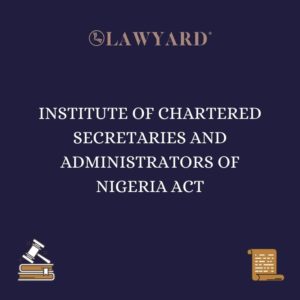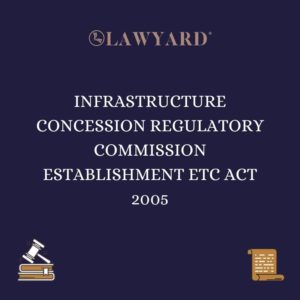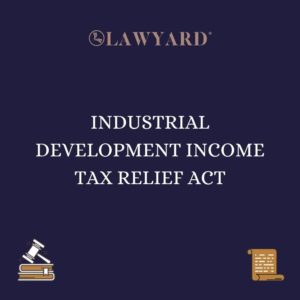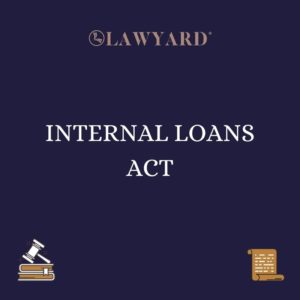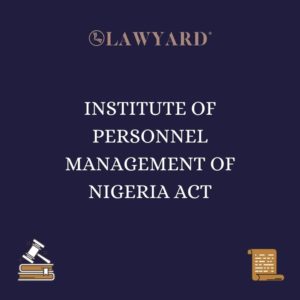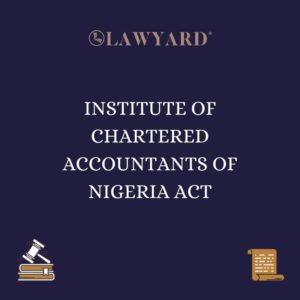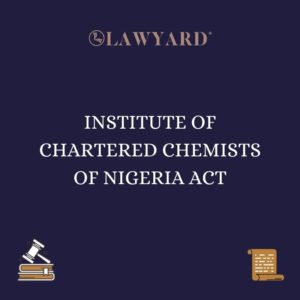UNDERSTANDING THE BOLT AND NUTS OF DOCUMENTARY EVIDENCE IN NIGERIA WITH THE AID OF DECIDED CASES.

Lawyard is a legal media and services platform that provides…
*WRITTEN BY: AJAO OREOLUWA BOLUWATIFE*
400 LEVEL STUDENT OF FACULTY OF LAW OLABISI ONABANJO UNIVERSITY
*Introduction*
In the growth of commerce, disputes are bound to arise. When disputes arise, parties involved approach the court to ventilate their displeasure and enforce their rights. Parties to a dispute before a court of law are required to put forward evidence in support of their respective claims. Only by evidence is the court able to determine the claims of the parties. Evidence is a means, exclusive of mere argument, which tend to prove or disprove any matter of fact, the truth of which is submitted to judicial investigation.
Documentary evidence forms part of the entire gamut of the law of evidence. It is one of the major recognized modes of proof. Documentary evidence is the yardstick by which the veracity of oral testimony is tested. For a lawyer or an intending lawyer to be successful in the legal profession he needs to be skilled with the law of evidence especially documentary evidence. There is a saying that “a poorly trained lawyer is a canker – worm to his client and disgrace to the legal profession”. There is also a Latin Maxim ” Cuilibet in sua arte perito est credendum ” . Meaning credence should be given to one skilled in his peculiar profession. Credit is to be given to any one skilled in his own art or profession.
*WHAT IS A DOCUMENT AND DOCUMENTARY EVIDENCE*
In the case of R v Date (1908) 2 KB 333 at 340, Darling J, defines a document as follows ” any written thing capable of being evidence is properly described as a document. It is immaterial on what the writing may be inscribed. It may not be inscribed not on a paper, but on parchment ,stone, marble e.t.c. According to section 258(1) of the Evidence Act , 2011, it defines a document as
“document” includes-
(a) books, maps, plans, graphs, drawings, photographs, and also includes any matter expressed or described upon any substance by means of letters, figures or marks or by more than one of these means, intended to be used or which may be used for the purpose of recording that matter;
(b) any disc, tape, sound track or other device in which sounds or other data (not being visual images) are embodied so as to be capable (with or without the aid of some other equipment) of being reproduced from it, and
(c) any film, negative, tape or other device in which one or more visual images are embodied so as to be capable (with or without the aid of some other equipment) of being reproduced from it;
(d) any device by means of which information is recorded, stored or retrievable including computer output.
Documentary evidence simply put is Evidence tendered through or by the means of documents is generally know as documentary evidence. Under the best evidence rule, documentary evidence is generally regarded as the best evidence to prove any given fact. According to Black’s law Dictionary (9th edition) “Documentary evidence is evidence supplied by writing, which must be authenticated before the evidence is admissible”.
The general rule, is that when a party wishes to rely on the contents of a document, the document itself, either in it’s original or secondary nature, where permissible in the latter case, should be put in evidence. Thus, in Abubakar v Waziri (2008) All FWLR ( pt. 436) S.C., the supreme Court held that where a party leads evidence as to the existence of a document in proof of his case, the original or, in an appropriate case, secondary evidence of it, should be tendered as the law generally does not allow oral evidence to be given in proof of such document.
*IMPORTANCE OF SIGNATURES AND DATES ON DOCUMENTS*
According to the Black’s law Dictionary(9th edition) “Signature” is defined as “A person’s name or mark written by that person or that person’s direction. A signature is used for two purposes, the first is to authenticate a document and the second is to identify the maker of the document. In A.B.C. Plc v Haston (Nig.) Plc (1997) 8 NWLR (Pt.515) 110 C.A, the court held that a document is said to be signed when one places his sign, Mark or thumb impression or writes his initials on the document. A person who signs a document is bound by it’s terms unless he alleges non est factum , mistake, mis representation or the like. In Omega Bank (Nig.) Plc v O.B.C Limited (2005) All FWLR (pt.249) S.C it was held that a document that is not signed may not be admitted in evidence and even if admitted, should not be accorded any weight because it has no origin in terms of its maker. That such a document has no efficacy in law and is worthless.
As regards dating of documents, the law is slightly different. Thus, it is the law that the mere fact that a statement is required to be in writing does not mean it must be dated, and absence of such date will not vitiate it.
Methods of Proof of Execution of Documents
Where any person is alleged to be the maker of a document then the handwriting or signature on the document in question must be proved to be the handwriting or signature of that person. See section 93(1) of the Evidence Act 2011. Also, where a statement in a document is tendered as documentary hearsay, the statement shall not be deemed to have been made by a person unless the document was signed or made in the handwriting of that person or recognized by him in writing as one for the accuracy of which he is responsible. See also section 83(4) of the Evidence Act 2011. There are six methods to prove the identity of the maker of the signature or handwriting on any document.
1)The first method is by the direct evidence of a witness. The direct evidence about the identity of any handwriting may be a confession by the maker of the writing or the evidence of a witness in whose presence the writing was made. See section 29 of the Evidence Act 2011 on confessions and section 126 of the Evidence Act 2011 on direct evidence.
2) The second method is by the opinion of any person acquainted with the handwriting or signature of the maker of the document. Section 72 of the Evidence Act 2011 states that, when the court has to form an opinion as to the person by whom any document was written or signed, the opinion of any person acquainted with the handwriting of the person by whom it is supposed to be written or signed, that is was or was not written or signed by that person is admissible.
3) The third method is by proof that the name, address, and business or occupation of the maker of the document in question is the same as that of the defendant. See section 94(1) of the Evidence Act 2011 states that, evidence that a person exists having the same name, address, business or occupation as the maker of a document purports to have, is admissible to show that such document was written or signed by that person.
4) The fourth method is by evidence that the document in question was a reply to another document delivered to the defendant in order to prove that the defendant was the maker of the document. Section 94(2) of the Evidence Act 2011 states that, evidence that a document exists to which the document in issue, purports to be a reply, together with evidence of the making and delivery to a person of such earlier document, is admissible to show the identity of the maker of the disputed document as the person to whom the earlier document was delivered.
5) The fifth method is by the finding of the trial Judge sitting in open court after a comparison of handwritings.( See section 101 of the Evidence Act 2011) The court may direct any person in court to write any words or figures to enable the judge to make the comparison. Section 101 of the Evidence Act 2011 does not permit a trial judge to examine the documents in chambers but only in open court. In Yongo v COP, (1992) NWLR (pt. 257) 36, Kutigi JSC said,
“On the whole therefore I am of the view that the magistrate was wrong when he single-handedly in his chambers, proceeded to examine Exh.K (the pledge) and thereby arrived at the conclusion that the writing and the signatures thereon were all done by one single individual. No wonder he did not say who wrote and or signed it. I think although the law permits trial courts to compare writings or signatures in order to discover their authors, this only arises in a case where the writings or signatures are in dispute and therefore in issue. And in such cases proven or acknowledged writings or signatures of the disputants must be before the court. Nobody has denied writing or signing Exh.K in this case.” See also, Queen v Wilcox (1961) ANLR 658, ACB v Ndoma-Egba (2000) NWLR (pt.994) 79, Abeke v The State (2007) NWLR (pt.1041) 411.
6) The sixth method is by circumstantial evidence. In some cases there may be no direct evidence of witnesses or the evidence of a handwriting expert but circumstantial evidence may provide proof that a document was forged or uttered by the defendant. In Akinbisade v The State, (2006) NWLR (pt.1007) 184,Tobi JSC delivering the lead judgment said,
“It is not in all cases that absence of evidence of handwriting expert is prejudicial to the case of the prosecution. While such evidence could be a desideratum in some cases, it is not invariably so. Where there is a very strong connecting link between the defendant and the document to the extent that the circumstances zero on the commission of the offence by the defendant, the court is entitled to draw the inference circumstantially that the defendant was the author of the document and therefore the author of the crime. It is because our adjectival law realises that it is not in all cases that direct evidence of an eye witness is possible that the law has carved out a niche to assimilate or accommodate circumstances surrounding the commission of an offence; a position which leads to the admission or admissibility of circumstantial evidence.” See also, UTB v Awanzingana Entp. (1994) NWLR (pt.348) 56
DOCUMENTS SIGNED OR EXECUTED BY ILLITERATE
An ILLITERATE PERSON is one that cannot read, write or understand a particular document. In Ezeigwe v Awudu (2008) All FWLR (Pt.434) 1529 S.C the supreme Court held that an illiterate is a person who is unable to write or understand a particular document. The ILLITERATE PROTECTION ACT 1920 and the various illiterate protection laws of some states or defunct regions in Nigeria have made provisions for the protection of illiterate persons. Although neither the Act nor those have expressly stated that documents which fail to comply with their provisions shall render such documentary evidence either inadmissible or evidently valueless, court of superior record in Nigeria have pronounced on these twin issues. When a document is written by a person the instructions of an illiterate, that the contents fully and correctly represent his instructions that prior to the document being signed, it was read over and explained to the illiterate, and that signature or mark thereon was made by such illiterate may be oral, which will clearly be admissible or may be patent on the face of the documents where they name and address of the writer are indicated as required as law.
*ADMISSIBILITY OF DOCUMENTARY EVIDENCE*
It was held in Okonji v Njokanma (1999) 12 SCNJ 259, that although admissibility of a document in a civil case is one thing while the question of weight to be attached to the document when it is eventually admitted is another, there are generally three main criteria that govern admissibility, namely:
1) Whether the document is pleaded
2) Whether the document is relevant
3) Whether the document is admissible in law.
In the case of Jimi v I.N.E.C. (2022) 8 NWLR ( Pt. 1833) 585 S.C, the supreme Court held that by the virtue of section 135(1) of the Evidence Act 2011, the mere front loading of documents without more cannot legally meet the legal requirement that he who asserts must prove his assertion.
The tribunal or Court is not bound to accept and rely on documents of which veracity or authencity is not tested or even in doubt. Nothing prevents a witness from making a false declaration on oath for fee to help his candidate of choice. Thus, front-loading relied on upon by a party does not derogate from the need to demonstrate the relevance of the document to the case or an aspect of the case. And the person most qualified to make the demonstration is the maker of the document.
In the case of Wike Nyesom v Dankuku Peterside (2016) 65 NSCQR 1325. The court held that where the maker of a document is not called to testify, the document would not be be accorded probative value, notwithstanding it’s status as a certified public document.
In the case of Makinde v Adekola (2022) 9 NWLR (pt. 1834) 13 S.C. the court held that counsel must on no account dump documents on the trial court. No court would spend precious judicial time linking document to specific areas of a party’s case. The law does not allow the court to inquire in Chambers into documents thrust on it by a party without having a witness speak to the documents in open court to enable the other party openly contest the contents of the tendered documents.
*CONCLUSION*
It is easier to prove your version of events when you have clear, written and/or recorded (written is preferable because of the intricacies which can surround recordings) evidence. Documentary evidence is a reliable form of evidence used to prove or disprove the existence of a fact in issue.
Lawyard is a legal media and services platform that provides enlightenment and access to legal services to members of the public (individuals and businesses) while also availing lawyers of needed information on new trends and resources in various areas of practice.


